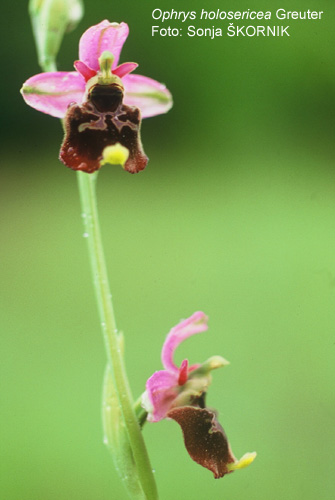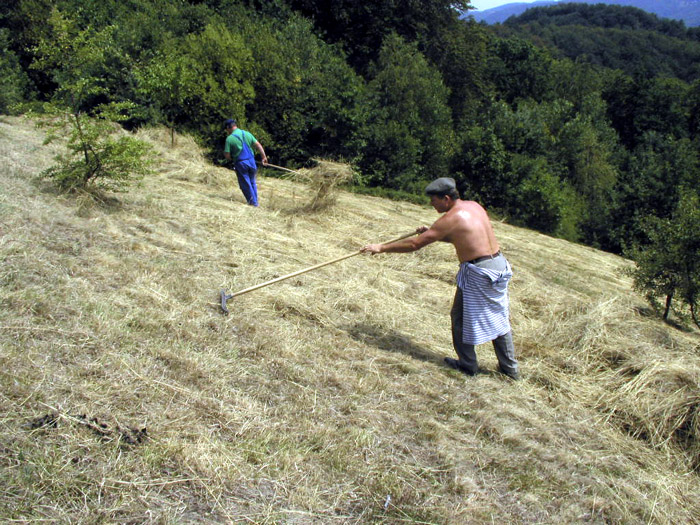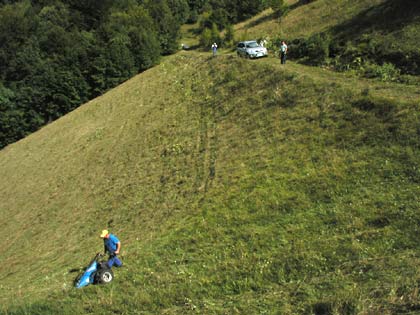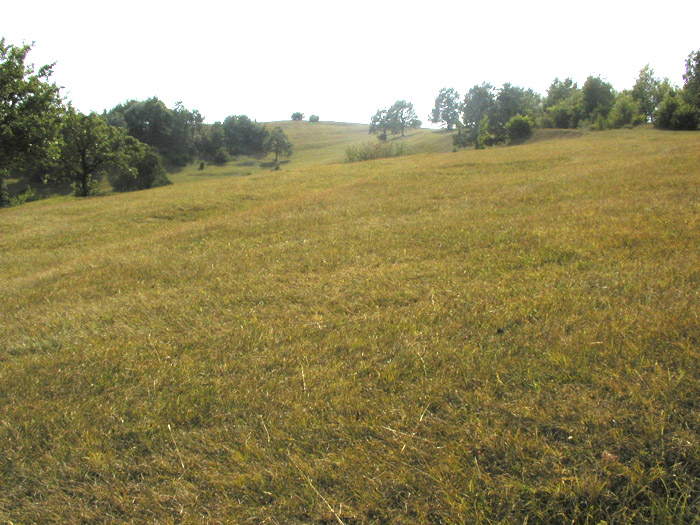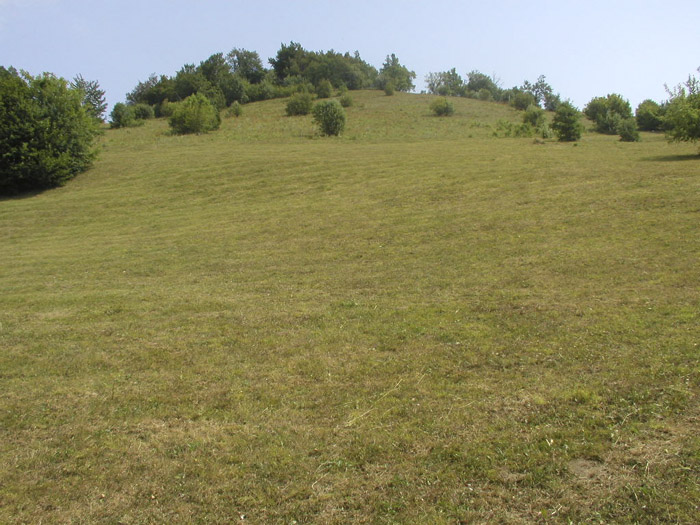| Country |
Slovenia |
| Natura
2000 site location |
Kozjanski
Region |
| Nearest
major urban settlement |
Celje |
| Natura
2000 site name |
Kozjanski
Park |
| Natura
2000 site number |
SI
3000138; SI 3000268; SI 3000273; SI 3000274; SI 5000022 |
| Size
of site (hectares) |
19.600
(Kozjanski Park), 7650 (022), 2400 (274), 3980 (273), 40 (138), 80 (268) |
| Site
classification / description |
Kozjanski
Park is an IUCN category V protected area - a Regional Park. It measures
about 200 sq. km. and it was founded in year 1981 with the proclamation
of the law by the Parliament. The Center is in small medieval village Podsreda.
Public Institution of Kozjanski Park established very strong connections
to the locals (10.000 totals) and it represents very significant part of
cultural and social life of the area. Park is very rich in natural and cultural
heritage; there are no heavy industries or any others activities, which
would have negative influence on protected area. There's not a lot of soil
adequate for farming, a major part of surface is covered by forests. Most
significant is a mixture between three macroregions: subalpine, illyric
and subpannonian. This results in heterogeneous plant and animal composition
(3/4 of Park's surface is proclaimed as Natura2000). Climate is continental,
average precipitation is approx. 1100 mm/sq.m. Highest mountains are about
1000 meters high, there is also lowland around Sotla River. On mountains
beech forest dominates, there are also some Karsts areas. Geological composition
is very colorful, some rare minerals can be found. Soil is basic (limestone),
there is no knowledge for presence of acidic soil.Park is responsible for
the implementation of national nature conservation legislation. Members
of the Park's staff are: ethnologists, historian, landscape architect, geologists,
biologists, geographer, agriculture expert, economist etc. Till now, many
projects in the field of nature and culture protection were successfully
completed (Life, Interreg, Phare ..). |
| Key
Habitat types |
8310
caves, 91K0 Fagus sylvatica, Aremonio-Fagion, 9110 Luzulo-Fagetum (138);
8210, 6210(*) Festuco-Brometalia, 91K0 Fagus sylvatica, Aremonio-Fagion,
9110 Luzulo-Fagetum (273); 6510 Alopecurus pratensis, Sanguisorba officinalis,
6410 Molinia spp. (Molinion caeruleae), 6210(*) Festuco-Brometalia, 91K0
Fagus sylvatica, Aremonio-Fagion, 9110 Luzulo-Fagetum (274); 91L0 Erythronio-Carpinion,
91K0 Fagus sylvatica, Aremonio-Fagion, 9110 Luzulo-Fagetum (268) |
| Key
Species types |
Cucujus
cinnaberinus, Morimus funereus, Rosalia alpina, Austropotamobius torrentium
(274); Rhinolophus hipposideros, Lutra lutra, Lucanus cervus, Morimus funereus,
Rosalia alpina, Vertigo angustior (273); Crex crex, Picoides medius, Ciconia
ciconia, Ciconia nigra, Strix uralensis, Picus canus, Ficedula albicollis,
Lanius collurio, Lanius minor, Jynx torquilla (022); Lutra lutra, Cordulegaster
heros, Lucanus cervus, Cerambyx cerdo, Unio crassus, Callimorpha quadripunctaria*,
Lycaena dispar, Triturus carnifex, Bombina bombina, Bombina variegata (268) |
Key
management issues |
sustainable
development, developing nature friendly tourism, elaboration and implementation
of management plan, elaboration and execution of different projects, networking,
collaboration with local authorities, inhabitants and other stakeholders,
protection of natural and cultural heritage, execution of annual events (Music
Summer, Apple Festival), research, education, monitoring, publishing, target
sites management - Natura 2000 high trunk orchards (birds) and Natura 2000
dry mountain meadows (orchids) |
| Organising
at least one Green Days event per year |
One
event organised in 2005 |
| Promoting
Natura 2000 at the local level |
Yes.
In the N2K pre-declaration process, within the framework of so called N2K
Communication Groups, there were several activities performed in order to
present the idea of N2K to the local authorities and inhabitants. Mostly
it was done as one of the points of Community Council meeting agenda. Further,
thanks to the Interreg IIIA project, which deals with the preservation and
restoration of SPA Natura 2000 site (high trunk orchards), some steps and
actions - as defined in the project - were presented to the general public.
This was done within the annual 1 week event, called Apple Festival. |
| Involving
local stakeholders in the management planning process - creating a local
area partnership |
Yes,
the management plan does involve local stekeholders in an active way. First,
there will be soon elaborated a new - so called General Management Plan
for the entire protected area of Kozjanski Park. Second, in that management
plan special emphasis will be given to the responding protection and development
regimes of N2K sites within Kozjanski Park. Third, a draft of a management
plan will be prepared by the team of experts of Kozjanski Park in collaboration
with an independent outside counsulting agency. Next, this draft will be
exposed to the other competent authorities and institutions, like Institution
of Nature Protection, Institution of Forestry, Institution of Agriculture,
Water management etc. in order to make the necessary corrections, additions,
adjustments.... After that, now even more complete draft, it will be open
to the general public - to be more precise - to the community councils.
If aproved, it will be presented to the Ministry of Environment and to the
Government to be adopted and later also to be proclaimed. Only then it will
became a strategic document with full validity. But not to forget; it can't
be proclaimed untill all the local communities don't agree with the designated
regimes. |
| Involved
in a natural site 'Twinning' or other knowledge exchange activities between
sites? |
It
would be overrate to claim that there is a regular exchange of working knowledge
with another site - nevertheless at many occasions we were in the position
to exchange the knowledge with different managers of other N2K sites or
other protected areas - predominantly these managers are our partners. In
case of grazing management we exchange the experience with the Naturpark
Oberer Bayerischer Wald (Germany), in case of meadows management we gained
from the experiences made by Naturpark Südsteirisches Weinland (Austria)
and during the visit of group of environmentalists from France we had the
opportunity to discuss with them about their views about managing N2K. Domestic
partners were very much interested in our experiences in managing dry meadows
during and after the Life project. A great support in getting an insight
in N2K management represent also different workshops and seminars. Such
a workshop was in Bile Karpaty (Czech Republic), where the management of
old high trunk orchards was detailed elaborated - especially in the viewpoint
of N2K and preservation of biodiversity. |
| Are
you involved in, or are you aware of examples of 'branding' of Natura 2000.
For example, does your site carry the Natura 2000 logo and/or include information
for visitors about Natura 2000? Are there local products, produced in or
around your site that are branded as Natura 2000 products... for example,
farm produce such as cheeses, beer etc. |
No.
Since the N2K in Slovenia is only 1,5 years old, it wouldn't be realistic
to expect that different local producers will be able to recognize all the
promotion and marketing potentials of N2K and that they are already interested
in branding their products with Natura 2000. N2K logo is yet to be exposed
and in this moment visitors would have many difficulties to find more detail
information on N2K outside the Kozjanski Park's HQ. |
| Agreeing
to become an NNi ambassador |
Bernard
Gorsak ( bernard.gorsak(a)kp.gov.si ) is an NNi Ambassador. There are some
ongoing activities on national and regional level in order to bring the
N2K closer to the people and part of which are also Kozjanski Park and/or
its representatives. Therefore we only welcome efforts going in that direction
and we are prepared to contribute our share to help N2K. |
